Tonghua Su
Memory-Augmented Incomplete Multimodal Survival Prediction via Cross-Slide and Gene-Attentive Hypergraph Learning
Jun 24, 2025Abstract:Multimodal pathology-genomic analysis is critical for cancer survival prediction. However, existing approaches predominantly integrate formalin-fixed paraffin-embedded (FFPE) slides with genomic data, while neglecting the availability of other preservation slides, such as Fresh Froze (FF) slides. Moreover, as the high-resolution spatial nature of pathology data tends to dominate the cross-modality fusion process, it hinders effective multimodal fusion and leads to modality imbalance challenges between pathology and genomics. These methods also typically require complete data modalities, limiting their clinical applicability with incomplete modalities, such as missing either pathology or genomic data. In this paper, we propose a multimodal survival prediction framework that leverages hypergraph learning to effectively integrate multi-WSI information and cross-modality interactions between pathology slides and genomics data while addressing modality imbalance. In addition, we introduce a memory mechanism that stores previously learned paired pathology-genomic features and dynamically compensates for incomplete modalities. Experiments on five TCGA datasets demonstrate that our model outperforms advanced methods by over 2.3% in C-Index. Under incomplete modality scenarios, our approach surpasses pathology-only (3.3%) and gene-only models (7.9%). Code: https://github.com/MCPathology/M2Surv
Multimodal Cancer Survival Analysis via Hypergraph Learning with Cross-Modality Rebalance
May 17, 2025Abstract:Multimodal pathology-genomic analysis has become increasingly prominent in cancer survival prediction. However, existing studies mainly utilize multi-instance learning to aggregate patch-level features, neglecting the information loss of contextual and hierarchical details within pathology images. Furthermore, the disparity in data granularity and dimensionality between pathology and genomics leads to a significant modality imbalance. The high spatial resolution inherent in pathology data renders it a dominant role while overshadowing genomics in multimodal integration. In this paper, we propose a multimodal survival prediction framework that incorporates hypergraph learning to effectively capture both contextual and hierarchical details from pathology images. Moreover, it employs a modality rebalance mechanism and an interactive alignment fusion strategy to dynamically reweight the contributions of the two modalities, thereby mitigating the pathology-genomics imbalance. Quantitative and qualitative experiments are conducted on five TCGA datasets, demonstrating that our model outperforms advanced methods by over 3.4\% in C-Index performance.
DUKAE: DUal-level Knowledge Accumulation and Ensemble for Pre-Trained Model-Based Continual Learning
Apr 09, 2025Abstract:Pre-trained model-based continual learning (PTMCL) has garnered growing attention, as it enables more rapid acquisition of new knowledge by leveraging the extensive foundational understanding inherent in pre-trained model (PTM). Most existing PTMCL methods use Parameter-Efficient Fine-Tuning (PEFT) to learn new knowledge while consolidating existing memory. However, they often face some challenges. A major challenge lies in the misalignment of classification heads, as the classification head of each task is trained within a distinct feature space, leading to inconsistent decision boundaries across tasks and, consequently, increased forgetting. Another critical limitation stems from the restricted feature-level knowledge accumulation, with feature learning typically restricted to the initial task only, which constrains the model's representation capabilities. To address these issues, we propose a method named DUal-level Knowledge Accumulation and Ensemble (DUKAE) that leverages both feature-level and decision-level knowledge accumulation by aligning classification heads into a unified feature space through Gaussian distribution sampling and introducing an adaptive expertise ensemble to fuse knowledge across feature subspaces.Extensive experiments on CIFAR-100, ImageNet-R, CUB-200, and Cars-196 datasets demonstrate the superior performance of our approach.
Adams Bashforth Moulton Solver for Inversion and Editing in Rectified Flow
Mar 17, 2025Abstract:Rectified flow models have achieved remarkable performance in image and video generation tasks. However, existing numerical solvers face a trade-off between fast sampling and high-accuracy solutions, limiting their effectiveness in downstream applications such as reconstruction and editing. To address this challenge, we propose leveraging the Adams-Bashforth-Moulton (ABM) predictor-corrector method to enhance the accuracy of ODE solving in rectified flow models. Specifically, we introduce ABM-Solver, which integrates a multi step predictor corrector approach to reduce local truncation errors and employs Adaptive Step Size Adjustment to improve sampling speed. Furthermore, to effectively preserve non edited regions while facilitating semantic modifications, we introduce a Mask Guided Feature Injection module. We estimate self-similarity to generate a spatial mask that differentiates preserved regions from those available for editing. Extensive experiments on multiple high-resolution image datasets validate that ABM-Solver significantly improves inversion precision and editing quality, outperforming existing solvers without requiring additional training or optimization.
Towards Unified Structured Light Optimization
Jan 24, 2025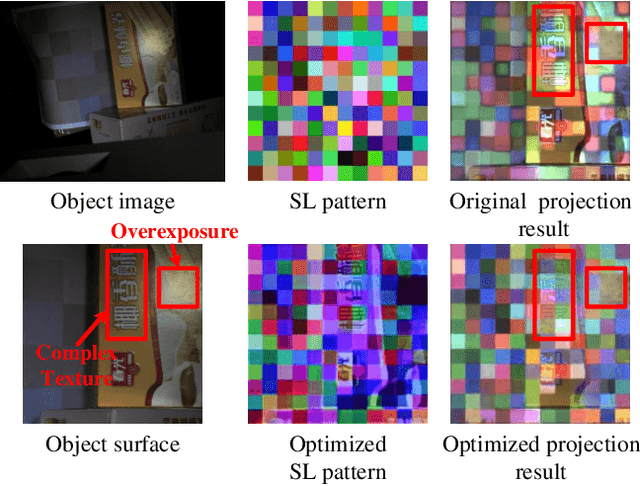
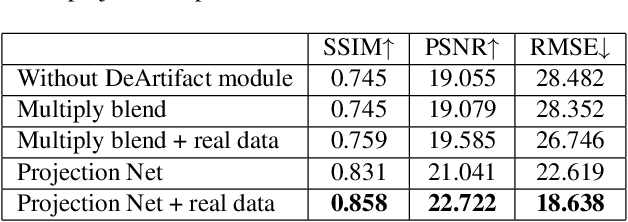
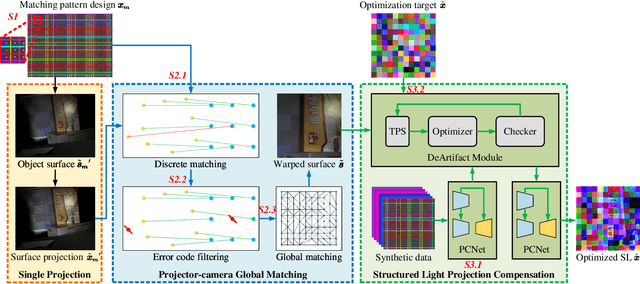
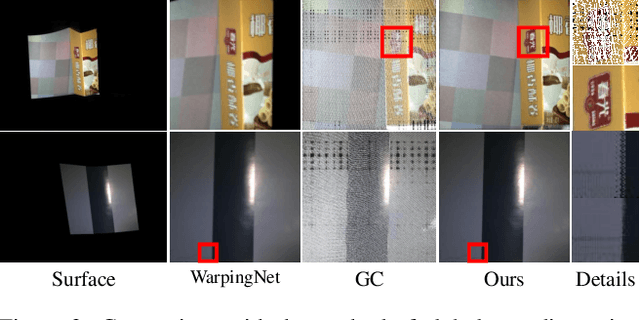
Abstract:Structured light (SL) 3D reconstruction captures the precise surface shape of objects, providing high-accuracy 3D data essential for industrial inspection and robotic vision systems. However, current research on optimizing projection patterns in SL 3D reconstruction faces two main limitations: each scene requires separate training of calibration parameters, and optimization is restricted to specific types of SL, which restricts their application range. To tackle these limitations, we present a unified framework for SL optimization, adaptable to diverse lighting conditions, object types, and different types of SL. Our framework quickly determines the optimal projection pattern using only a single projected image. Key contributions include a novel global matching method for projectors, enabling precise projector-camera alignment with just one projected image, and a new projection compensation model with a photometric adjustment module to reduce artifacts from out-of-gamut clipping. Experimental results show our method achieves superior decoding accuracy across various objects, SL patterns, and lighting conditions, significantly outperforming previous methods.
Boundary-Guided Learning for Gene Expression Prediction in Spatial Transcriptomics
Dec 05, 2024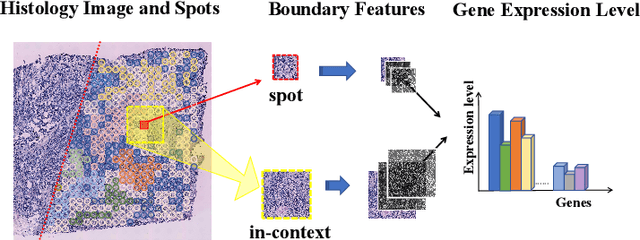
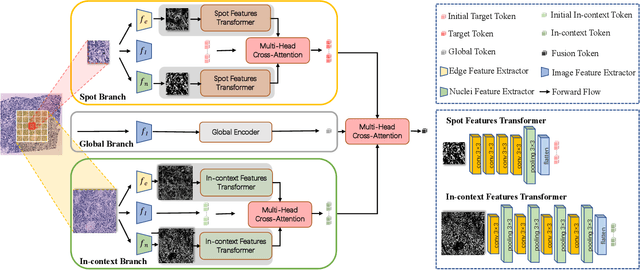
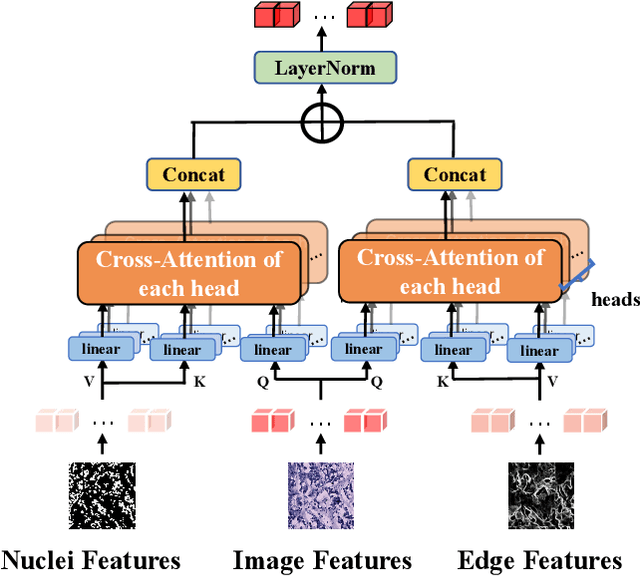
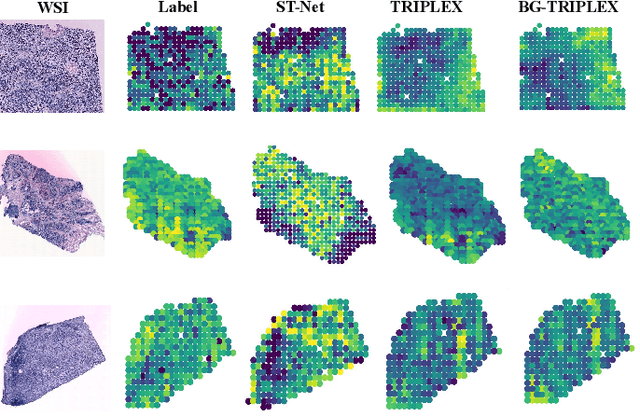
Abstract:Spatial transcriptomics (ST) has emerged as an advanced technology that provides spatial context to gene expression. Recently, deep learning-based methods have shown the capability to predict gene expression from WSI data using ST data. Existing approaches typically extract features from images and the neighboring regions using pretrained models, and then develop methods to fuse this information to generate the final output. However, these methods often fail to account for the cellular structure similarity, cellular density and the interactions within the microenvironment. In this paper, we propose a framework named BG-TRIPLEX, which leverages boundary information extracted from pathological images as guiding features to enhance gene expression prediction from WSIs. Specifically, our model consists of three branches: the spot, in-context and global branches. In the spot and in-context branches, boundary information, including edge and nuclei characteristics, is extracted using pretrained models. These boundary features guide the learning of cellular morphology and the characteristics of microenvironment through Multi-Head Cross-Attention. Finally, these features are integrated with global features to predict the final output. Extensive experiments were conducted on three public ST datasets. The results demonstrate that our BG-TRIPLEX consistently outperforms existing methods in terms of Pearson Correlation Coefficient (PCC). This method highlights the crucial role of boundary features in understanding the complex interactions between WSI and gene expression, offering a promising direction for future research.
One-Shot Pose-Driving Face Animation Platform
Jul 12, 2024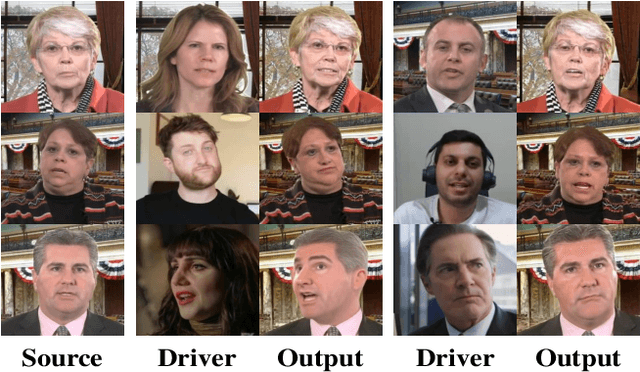
Abstract:The objective of face animation is to generate dynamic and expressive talking head videos from a single reference face, utilizing driving conditions derived from either video or audio inputs. Current approaches often require fine-tuning for specific identities and frequently fail to produce expressive videos due to the limited effectiveness of Wav2Pose modules. To facilitate the generation of one-shot and more consecutive talking head videos, we refine an existing Image2Video model by integrating a Face Locator and Motion Frame mechanism. We subsequently optimize the model using extensive human face video datasets, significantly enhancing its ability to produce high-quality and expressive talking head videos. Additionally, we develop a demo platform using the Gradio framework, which streamlines the process, enabling users to quickly create customized talking head videos.
Scene Style Text Editing
Apr 20, 2023Abstract:In this work, we propose a task called "Scene Style Text Editing (SSTE)", changing the text content as well as the text style of the source image while keeping the original text scene. Existing methods neglect to fine-grained adjust the style of the foreground text, such as its rotation angle, color, and font type. To tackle this task, we propose a quadruple framework named "QuadNet" to embed and adjust foreground text styles in the latent feature space. Specifically, QuadNet consists of four parts, namely background inpainting, style encoder, content encoder, and fusion generator. The background inpainting erases the source text content and recovers the appropriate background with a highly authentic texture. The style encoder extracts the style embedding of the foreground text. The content encoder provides target text representations in the latent feature space to implement the content edits. The fusion generator combines the information yielded from the mentioned parts and generates the rendered text images. Practically, our method is capable of performing promisingly on real-world datasets with merely string-level annotation. To the best of our knowledge, our work is the first to finely manipulate the foreground text content and style by deeply semantic editing in the latent feature space. Extensive experiments demonstrate that QuadNet has the ability to generate photo-realistic foreground text and avoid source text shadows in real-world scenes when editing text content.
A Survey on Deep Neural Network Partition over Cloud, Edge and End Devices
Apr 20, 2023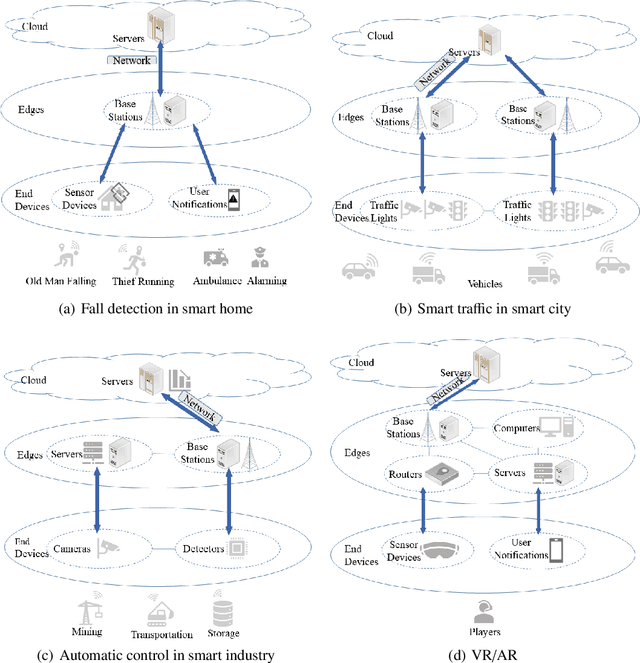
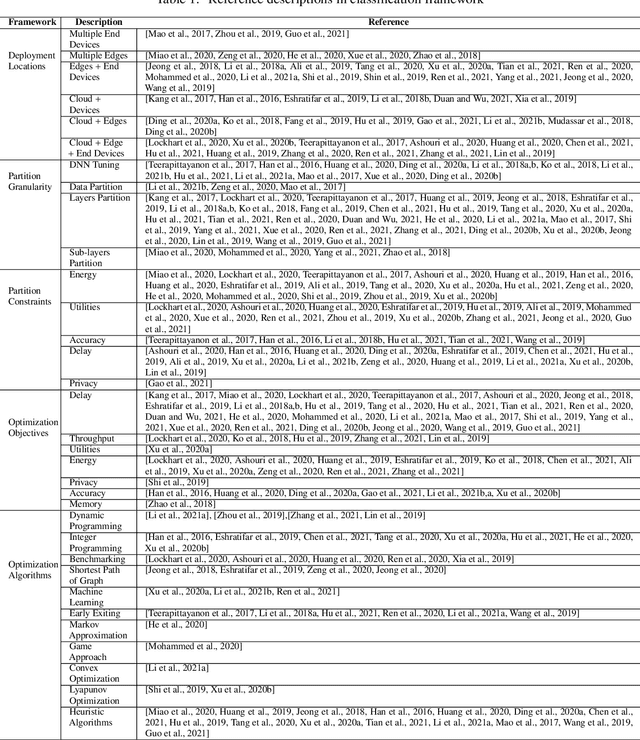

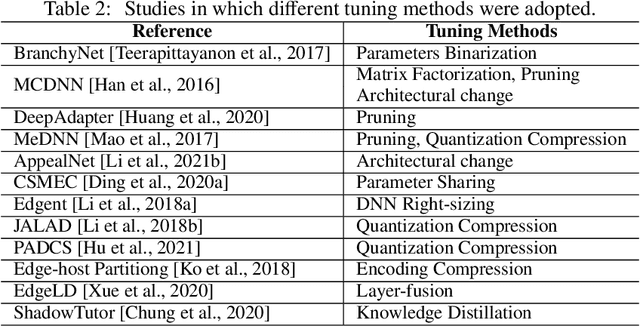
Abstract:Deep neural network (DNN) partition is a research problem that involves splitting a DNN into multiple parts and offloading them to specific locations. Because of the recent advancement in multi-access edge computing and edge intelligence, DNN partition has been considered as a powerful tool for improving DNN inference performance when the computing resources of edge and end devices are limited and the remote transmission of data from these devices to clouds is costly. This paper provides a comprehensive survey on the recent advances and challenges in DNN partition approaches over the cloud, edge, and end devices based on a detailed literature collection. We review how DNN partition works in various application scenarios, and provide a unified mathematical model of the DNN partition problem. We developed a five-dimensional classification framework for DNN partition approaches, consisting of deployment locations, partition granularity, partition constraints, optimization objectives, and optimization algorithms. Each existing DNN partition approache can be perfectly defined in this framework by instantiating each dimension into specific values. In addition, we suggest a set of metrics for comparing and evaluating the DNN partition approaches. Based on this, we identify and discuss research challenges that have not yet been investigated or fully addressed. We hope that this work helps DNN partition researchers by highlighting significant future research directions in this domain.
 Add to Chrome
Add to Chrome Add to Firefox
Add to Firefox Add to Edge
Add to Edge